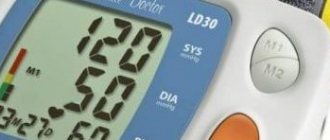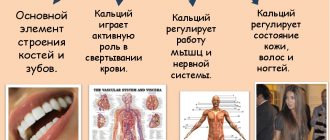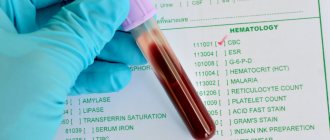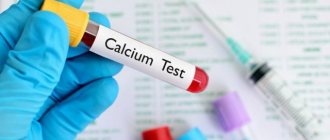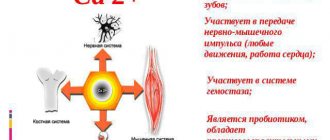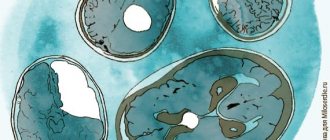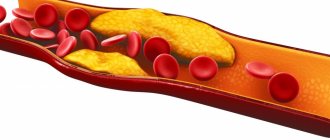Disruption of calcium metabolism due to deviations in the functionality of the endocrine glands can lead to serious complications. Calcium is a mineral necessary for the body to form and maintain healthy bone tissue. The body contains 1.5 kg of this mineral.
Calcium enters the body with food and is also produced by the parathyroid glands. The endocrine system regulates the metabolic processes between calcium and phosphorus. With hormonal deficiency, there is an increase in phosphate in the blood with a concomitant decrease in calcium levels. Dysfunction of the gland can also lead to the reverse process, when calcium levels are increased. Both types of deviations are not considered normal and cause the development of pathological processes.
Characteristics
In the human body, a violation of calcium metabolism provokes the development of various diseases. Calcium is considered an important element in the process of regulating the nervous excitability of muscle tissue, the process of hemostasis, in the stabilization of cell tissue membranes, and in the transduction of intracellular signals.
In medicine, there are two forms of disturbance of mineral metabolism in the endocrine system:
- hypocalcemia (hypoparathyroidism);
- hypercalcemia (hyperparathyroidism).
The second type of disease is more dangerous and requires more complex treatment. In most cases, if the pathology is advanced, doctors resort to surgery.
In order to understand what could provoke a change in the production of calcium by the parathyroid glands into the blood, how to deal with this disorder and what the consequences may be, each pathology should be considered separately.
4.Treatment
The most effective and natural way to restore the optimally required calcium concentration is a fortified diet. It should, however, be understood that any diets, like all other treatment regimens, activities, procedures, can be developed and prescribed exclusively by a doctor.
The same applies to special calcium-containing supplements and drugs intended for the treatment of the most severe cases of calcium deficiency: such drugs can only be used as prescribed by a doctor.
Causes of hypocalcemia
Endocrine organs are sensitive to effects on them, so calcium metabolism can be disrupted for various reasons.
A decrease in plasma Ca may occur for the following reasons:
- neck trauma with bleeding;
- complication after surgery on the thyroid gland;
- inflammatory processes;
- ionizing radiation;
- metastasis in endocrine organs;
- adrenal insufficiency;
- autoimmune diseases;
- systemic diseases.
Identifying the causes is considered the basis of treatment, since if the influence of negative factors continues, therapy will not be effective.
Diet
There is no specially designed diet, however, in cases where an excess of calcium is caused by increased absorption of Ca+ in the intestine ( D-hypervitaminosis , Burnett's syndrome ), a diet with a decrease in calcium content in food is recommended (approximately at the level of 800 mg/day). For this purpose, it is recommended to limit the consumption of products such as sesame seeds, hard cheeses, almonds, sardines in oil, garlic, parsley, soybeans, hazelnuts, and also reduce the consumption of milk and dairy products.
Causes of hypercalcemia
Excess Ca in plasma can be caused by several factors. It is not uncommon for calcium metabolism disorders to occur due to the development of malignant tumors or benign tumors.
In 80% of patients, hypercalcemia develops due to disorders resulting from the formation of a solitary adenoma on the pituitary gland. Adenoma, in turn, is formed due to stress, low blood pressure, hormone intake, etc.
In 12% of cases, the cause is the primary form of hyperplasia. 2% of patients are diagnosed with parathyroid cancer. About 6% of patients have multiple adenoma.
Reasons can also include:
- deficiency in the diet of foods containing calcium;
- violation of malabsorption functions of the intestine;
- chronic renal failure.
Treatment in this case involves eliminating the cause. If after this the indicators do not change, targeted therapy or even surgery is performed.
List of sources
- Leonard R. Sanders. Hyperparathyroidism // Secrets of endocrinology / ed. M.T McDermott. - M.-SPb: BINOM Publishing House - Nevsky Dialect, 2001. - P. 129-140.
- Dedov I.I., Melnichenko G.A., Pronin V.S., et al. Clinic and diagnosis of endocrine disorders. - M., 2005. - P. 99–111.
- Volkov M.M., Kayukov I.G., Smirnov A.V. phosphorus-calcium metabolism and its regulation. Nephrology. 2010; 14(1):91-103.
- Cherenko S.M. Primary hyperparathyroidism: basics of pathogenesis, diagnosis and surgical treatment. - K.: Express polygraph, 2011. - 148 p.
- Mirnaya S.S., Pigarova E.A., Belyaeva A.V. et al. The role of the calcium-sensing receptor in maintaining the calcium homeostasis system // Osteoporosis and Osteopathy. 2010. No. 3. pp. 32–36.
A little more about the symptoms
The clinical picture in both cases is pronounced. The main area of damage is the skeletal system, which contains more than 90% of the total calcium content in the body.
Symptoms of hypercalcemia, regarding bone tissue:
- pseudo- and simple form of gout;
- deformation;
- pain;
- muscle weakness and atrophy;
- fractures even with simple bruises;
- cystic bone formations.
In the severe stage, there is a sensation of “pins and needles”, numbness and burning in certain parts of the body, and temporary paralysis of the pelvic muscles may occur.
Hypocalcemia is characterized by seizures that can affect not only the limbs, but also the muscles of the chest. The danger comes from a hypocalcemic crisis, which causes serious complications.
1.General information
Probably, any modern person, when asked “Why is calcium needed in the body?” will answer without hesitation: “For the bones.” To a large extent, this is true: almost the entire volume of calcium contained in the body is located in the bone tissues of skeletal structures, and the main processes of its absorption and processing are carried out there. However, it is needed not only “for the bones”.
The role of calcium as a biochemical reagent is much broader and more important: this macroelement (not to be confused with microelements, the required concentration of which is orders of magnitude lower) is involved in the regulation of the processes of excitation-inhibition of the nervous system, desensitization and immune response (it is no coincidence that calcium salts are prescribed for allergic reactions), cellular nutrition, contractile activity of muscle fibers, peristalsis, differentiation of stem cells, secretion of enzymes and hormones, hair and tooth growth.
Nutritional deficiency of calcium, as well as deficiency of other key macro- and microelements (for example, iodine, magnesium, potassium, etc.) at this stage of development of civilization is becoming an increasingly serious problem, since the intake of these substances into the body depends critically on lifestyle and diet, and both are becoming less and less natural for humans. An additional complication is the fact that a deficiency of such elements is most often not the first diagnosis: patients present with symptoms of inflammatory, infectious, metabolic, allergic, gastroenterological and many other disorders - and are treated specifically for them - while the underlying painful condition there lies a deficiency of one or another biologically active substance, which can clearly manifest itself only many years after the first noticeable disturbances appear.
A must read! Help with treatment and hospitalization!
Hypercalcemic crisis
A rare but dangerous complication is hypercalcemic crisis. In an acute condition, the patient’s entire nervous system is disrupted and blood clotting accelerates. Increased blood density implies increased risks for the patient’s life, as this can lead to the formation of blood clots or complete cardiac arrest.
Hypercalcemic crisis has symptoms:
- maintaining temperature above 40°C;
- internal bleeding;
- signs of fever;
- severe itching of the skin.
Disturbances of the central nervous system lead to the occurrence of psychosis, and subsequently shock. The patient's condition leads to the fact that he does not understand what is happening. If medical assistance is not provided in a timely manner, respiratory paralysis begins, followed by cardiac arrest and death.
Classification
The classification is based on several characteristics.
Based on the content of the Ca+ cation, several degrees of severity of hypercalcemia are distinguished:
- Mild degree - total Ca content less than 3 mmol/l; ionized calcium – up to 1.5 mmol/l.
- Moderate degree - the level of total Ca is increased to 3.5 mmol/l; and the ionized calcium indicator is up to 1.8 mmol/l.
- Severe degree—total Ca level above 3.5 mmol/l; ionized calcium - more than 1.8 mmol/l.
According to the course, acute hypercalcemia (synonymous with hypercalcemic crisis) and chronic are distinguished.
A hyperparathyroid crisis occurs when excess calcium entering the bloodstream exceeds the excretory capacity of the kidneys. The critical calcium concentration is generally individual, but in most people the toxic effect appears already at levels of 3.4-4.1 mmol/l.
Hypocalcemic crisis
An exacerbation of calcium deficiency is characterized by a decrease in plasma minerals to less than 2.25 mmol/l. A hypocalcemic crisis is also dangerous.
The attack can occur suddenly, but, as a rule, it is preceded by a number of symptoms:
- feeling of "goosebumps";
- tingling feeling throughout the body;
- limbs and part of the face go numb;
- severe muscle weakness;
- sudden muscle pain;
- depression;
- change in skin color.
Gradually, loss of sensitivity and other signs are replaced by muscle twitching. Initially, the patient feels only mild and isolated spasms, but quickly enough the condition develops into attacks of severe convulsions.
Muscle tone is expressed by characteristic manifestations:
- “the hand of the obstetrician”;
- "horse foot";
- "fish mouth";
- and others.
The danger arises when spasms affect the muscle tissue of internal organs: renal/liver colic, laryngospasm or bronchospasm. Impaired breathing can cause asphyxia.
At the moment of crisis, the patient feels unbearable pain, from which he loses consciousness and the ability to rationally perceive what is happening.
Lack of calcium in a child
When a pathological condition is identified, when a child does not have a constant supply of calcium, he or she experiences constant fatigue, a decrease in the body’s protective function, which leads to constant viral diseases, as well as colds.
Vitamin deficiency can manifest itself in the form of an allergic reaction with rashes on the skin. The surface of the cheeks is mainly affected by rash, redness and itching.
For infants, a lack of nutrients results in a weakening of the grasping reflex, as well as weakness of the lower extremities. As a result, such children are unsteady on their feet and begin to walk and talk later.
Diagnostics
Calcium metabolism disorders are determined by laboratory tests. To determine the cause of the pathology, more extensive research is required, so specialists prescribe hardware studies. Additionally, differential diagnosis can be carried out.
Examination methods:
- urine test (general) - with elevated Ca levels, a mineral will be present in the biomaterial and the alkaline reaction will be pronounced;
- blood test (biochemical) - a significant increase/decrease in ionized and total calcium is detected in the plasma;
- ultrasound examination - the entire endocrine system is examined for the presence of tumors, tissue enlargement and other abnormalities;
- radiography - used to examine bones to determine the possible development of osteoporosis, fractures, cystic formations and other pathological processes;
- densitometry - used to accurately determine the density of bone tissue;
- radiography (with contrast agent) - helps to identify ulcerative lesions of the gastrointestinal tract and parathyroid adenoma in the retrosternal space;
- computed tomography - examines the urinary system and kidneys for the presence of stones;
- magnetic resonance imaging - allows you to obtain the most accurate data about tumor formations of the thyroid glands;
- spintigraphy is a study using radioactive isotopes, with the help of which it is possible to visualize the area under study.
Diagnostics allows you to obtain the maximum amount of information to identify provoking factors, characteristics of the disease and possible complications. Treatment can begin only after receiving the examination results.
How much does an adult and child's body need?
Height affects the amount of calcium the body needs. Thus, elderly people who have crossed the 55-60 year mark require an order of magnitude higher than teenagers or young children.
But it is not enough to simply take medications that contain this vitamin. For its better absorption by the body, it is required that it be supplied simultaneously with phosphorus.
The following dosages are distinguished, which are optimally suitable for certain age categories as consumption per day, mg:

